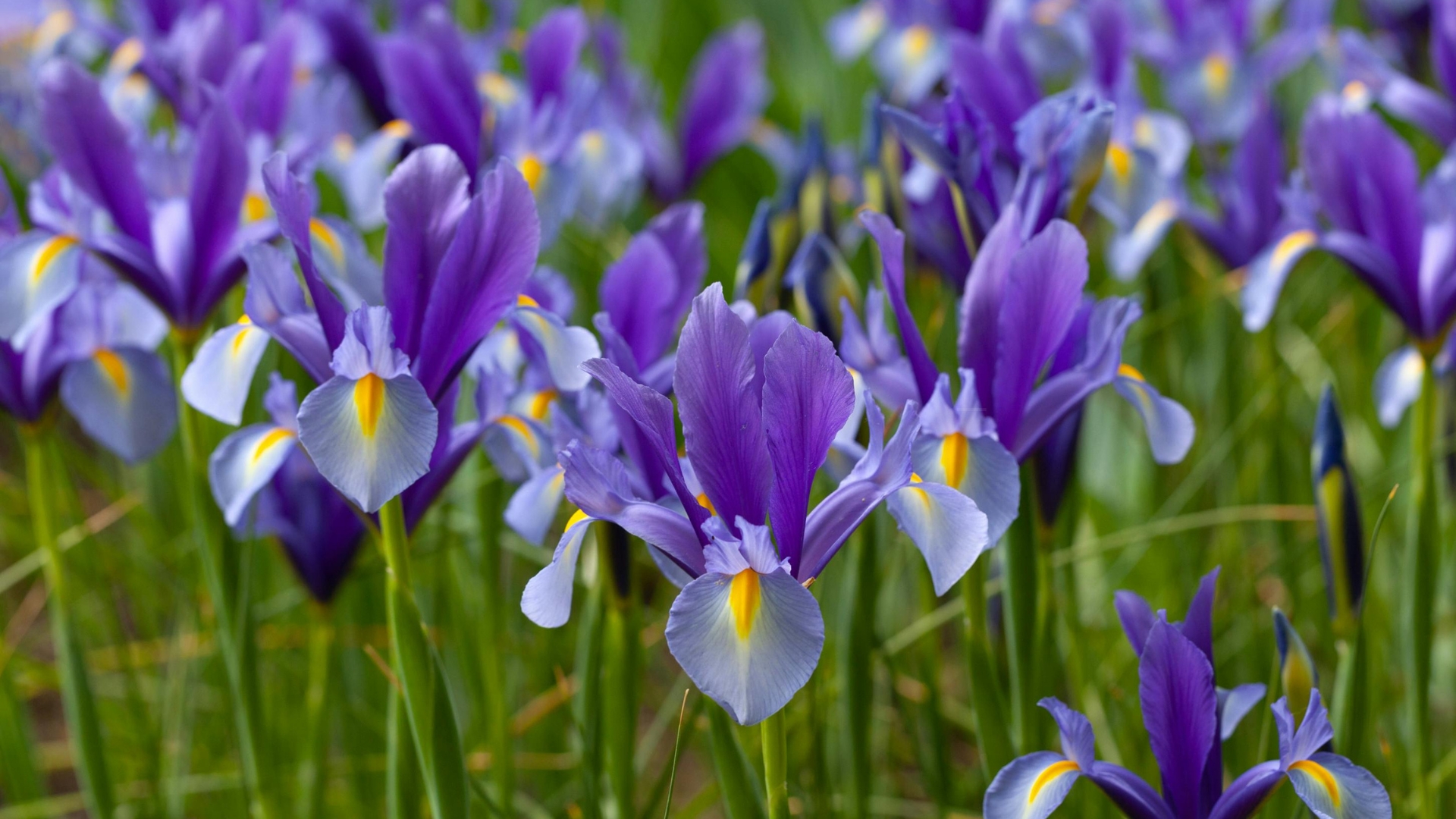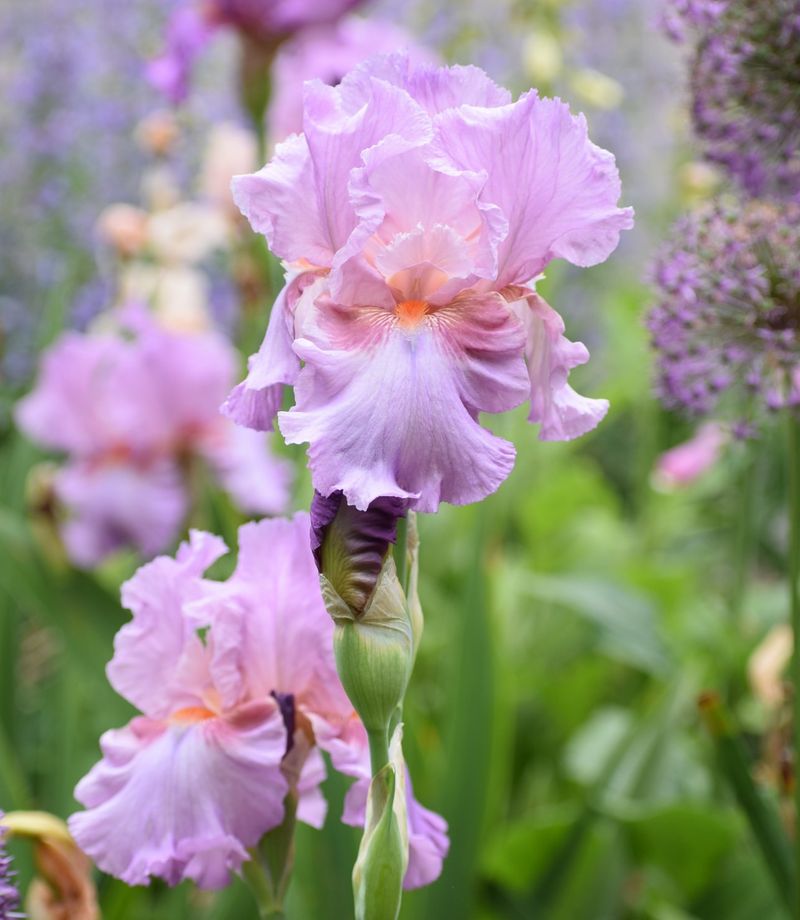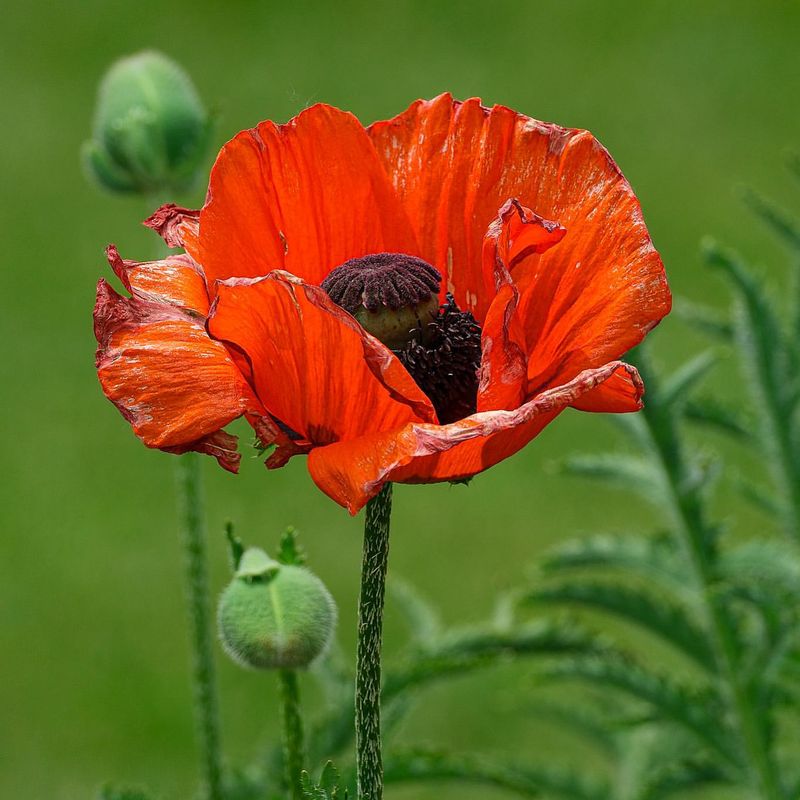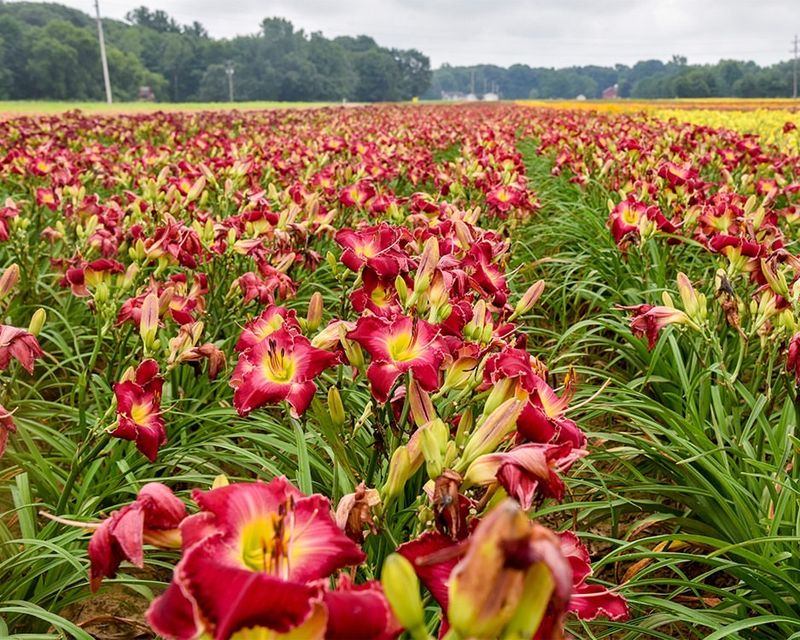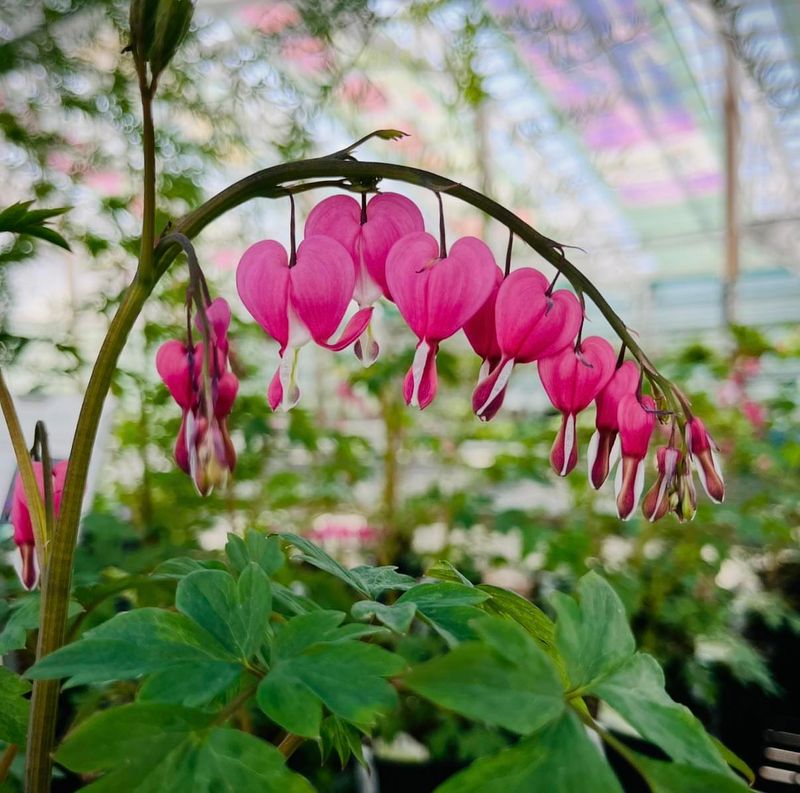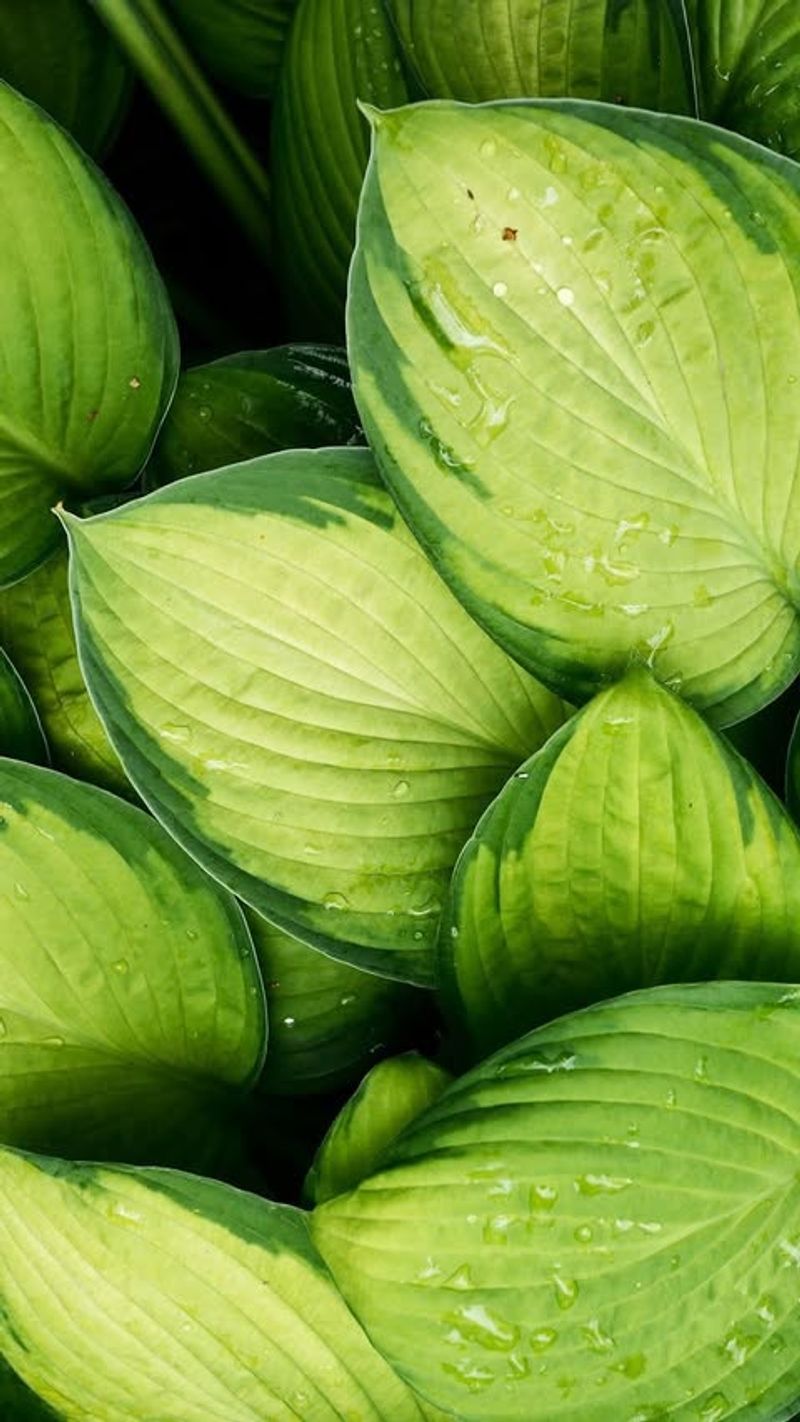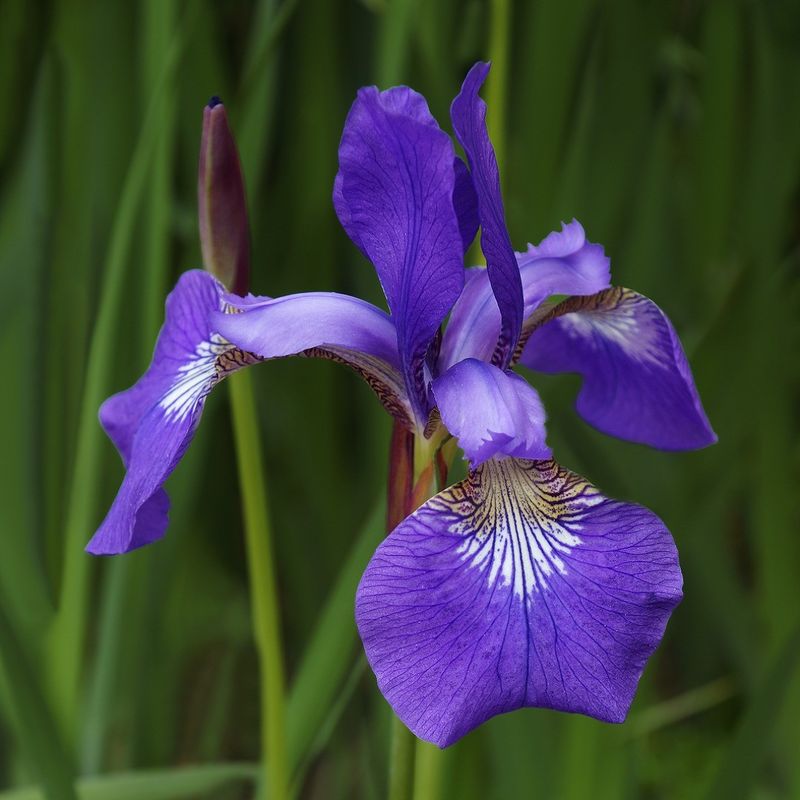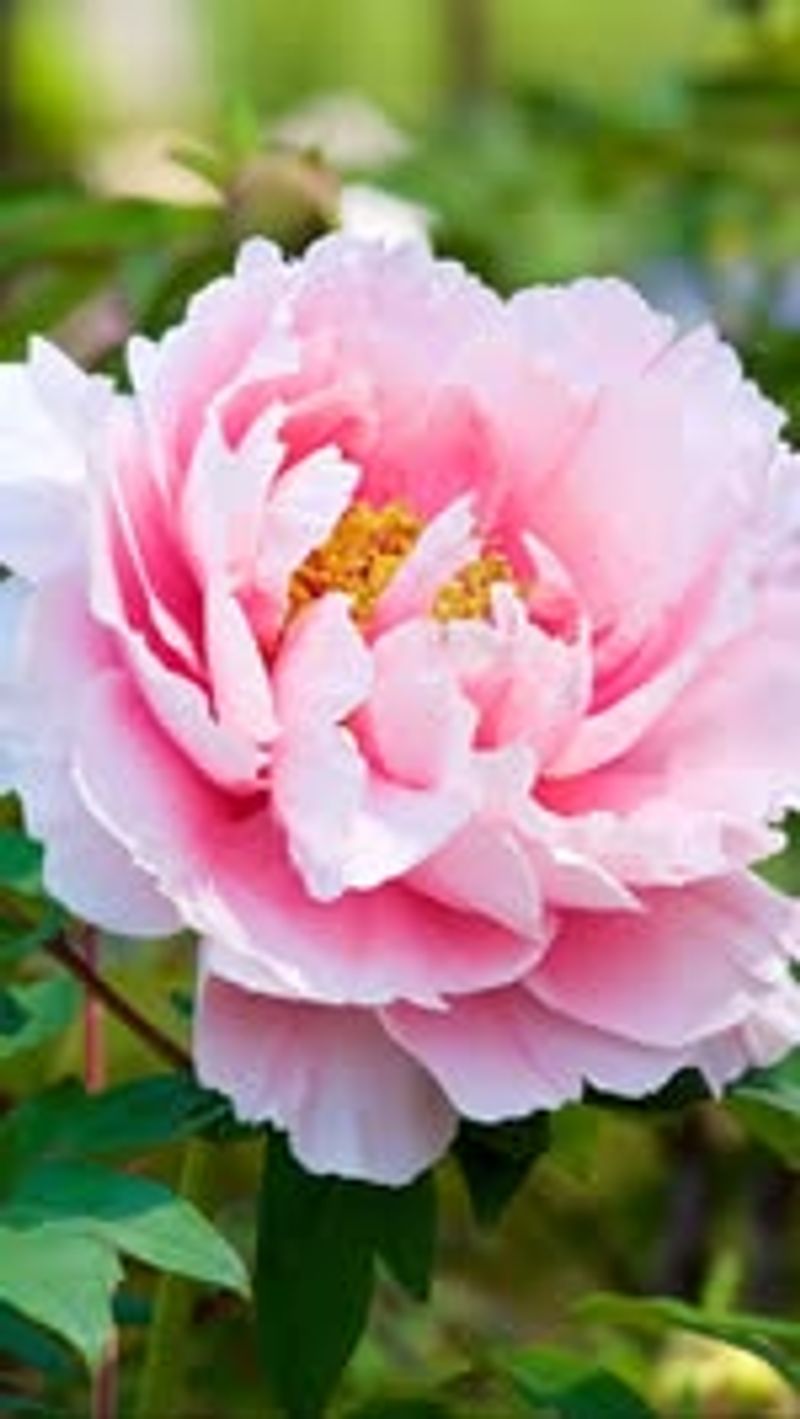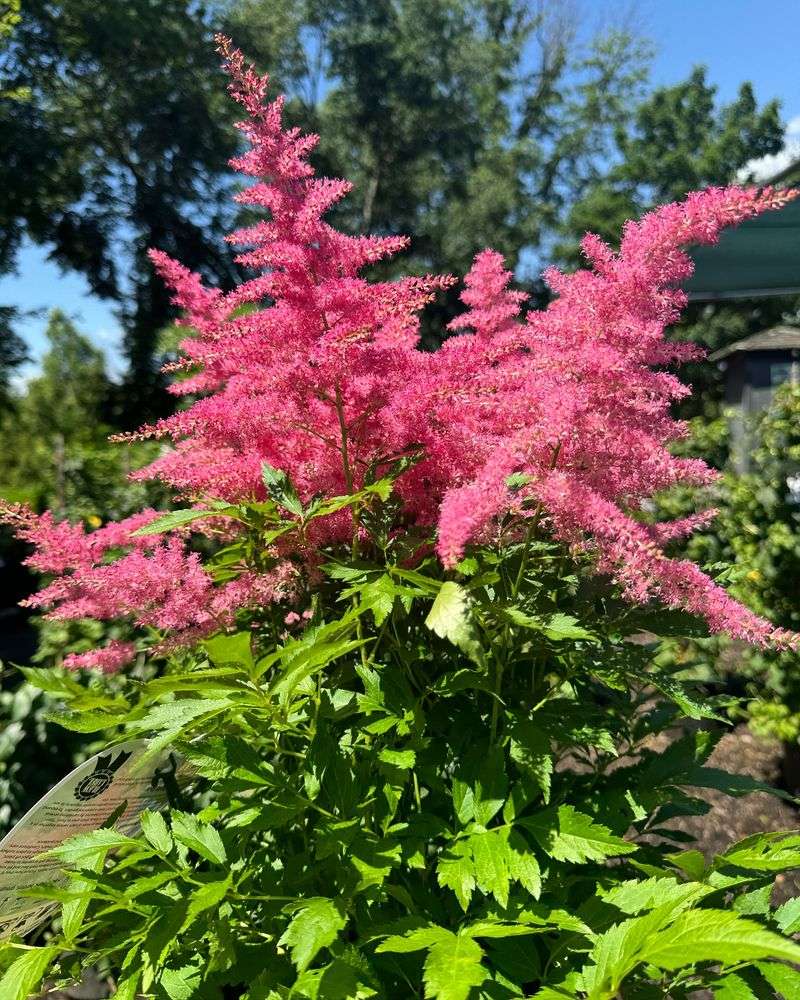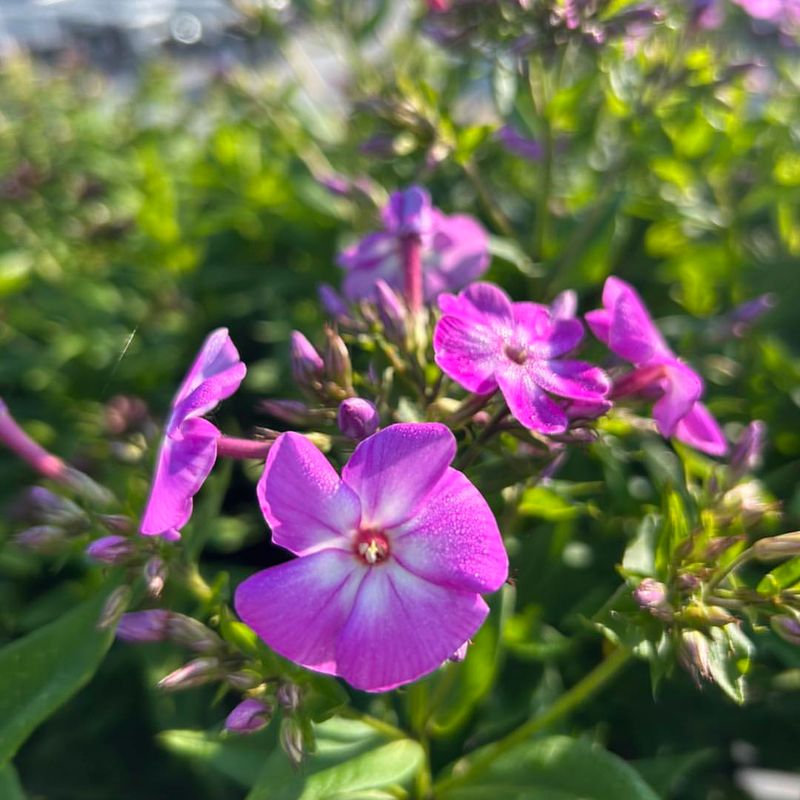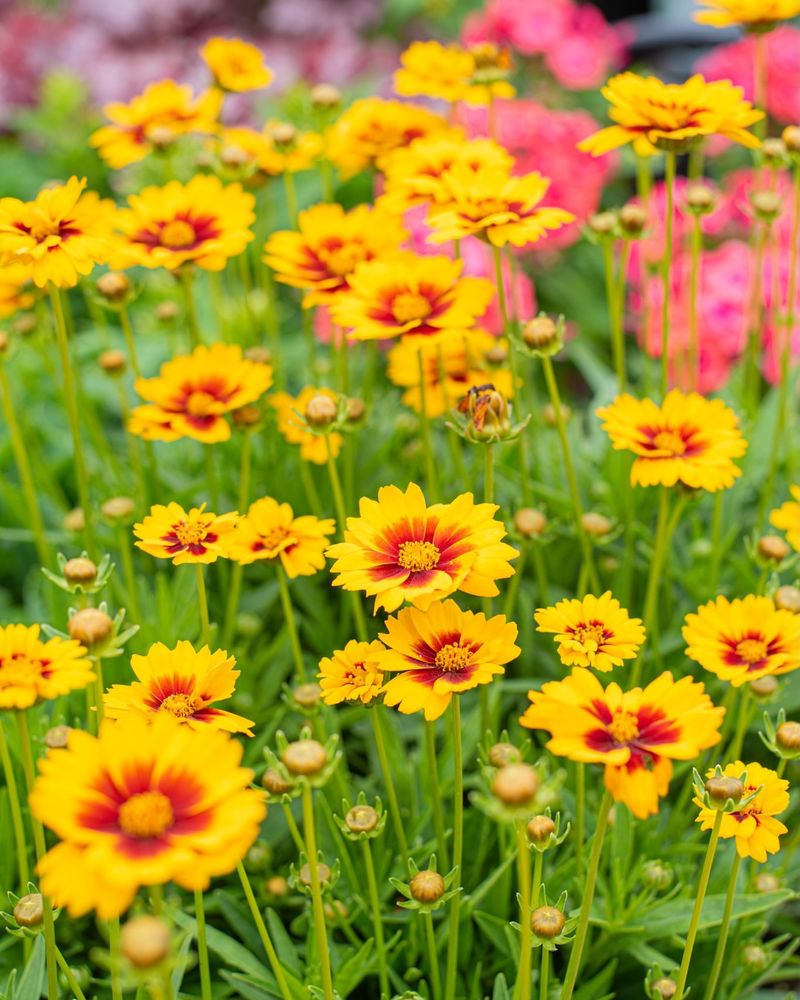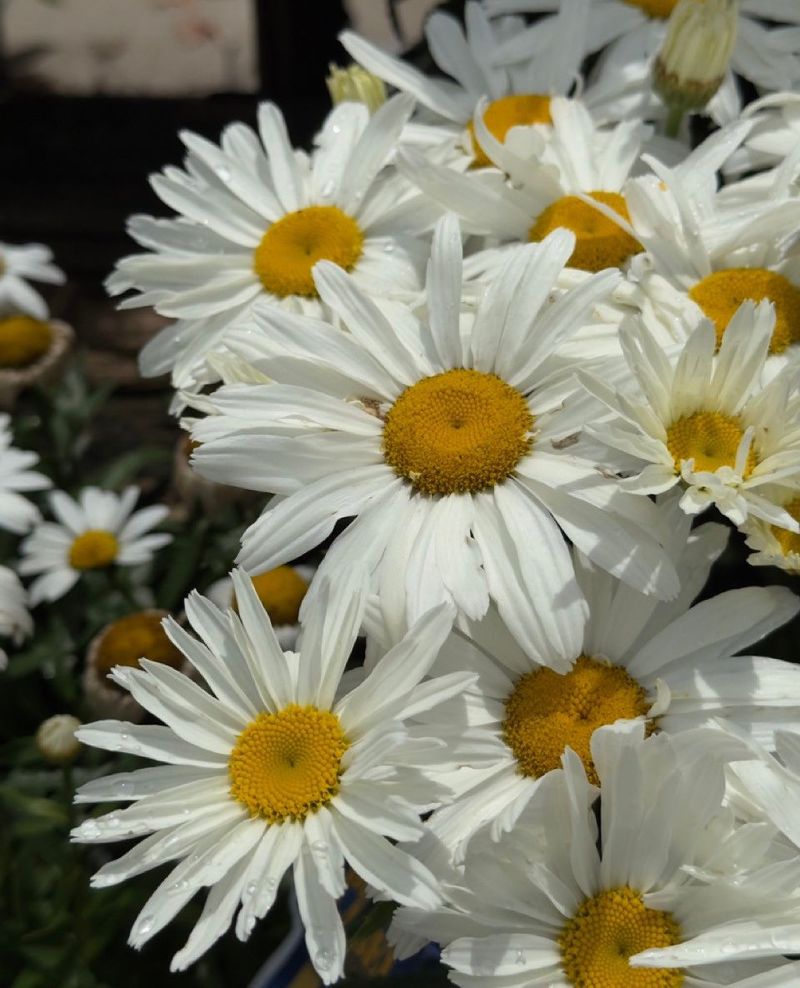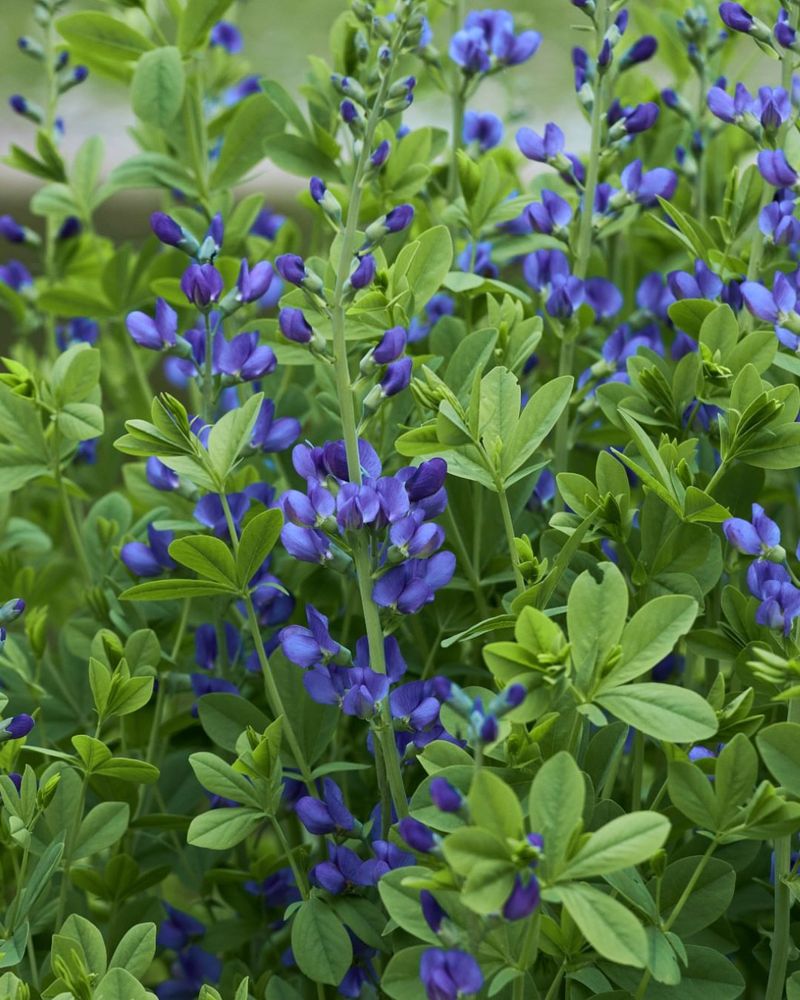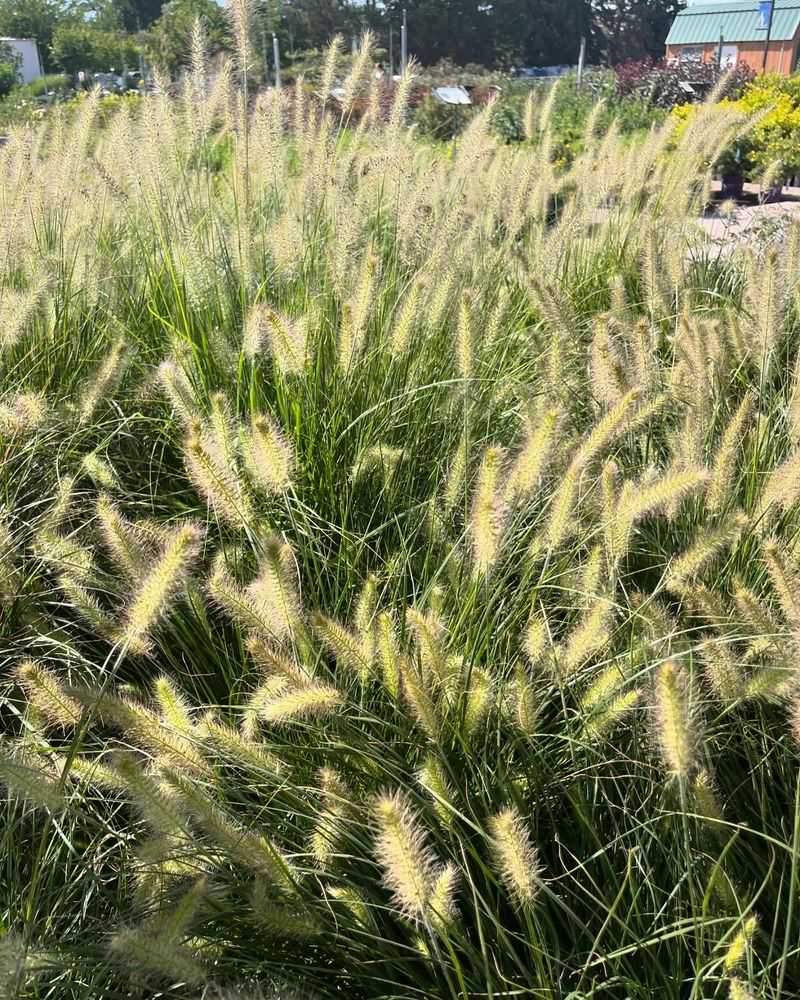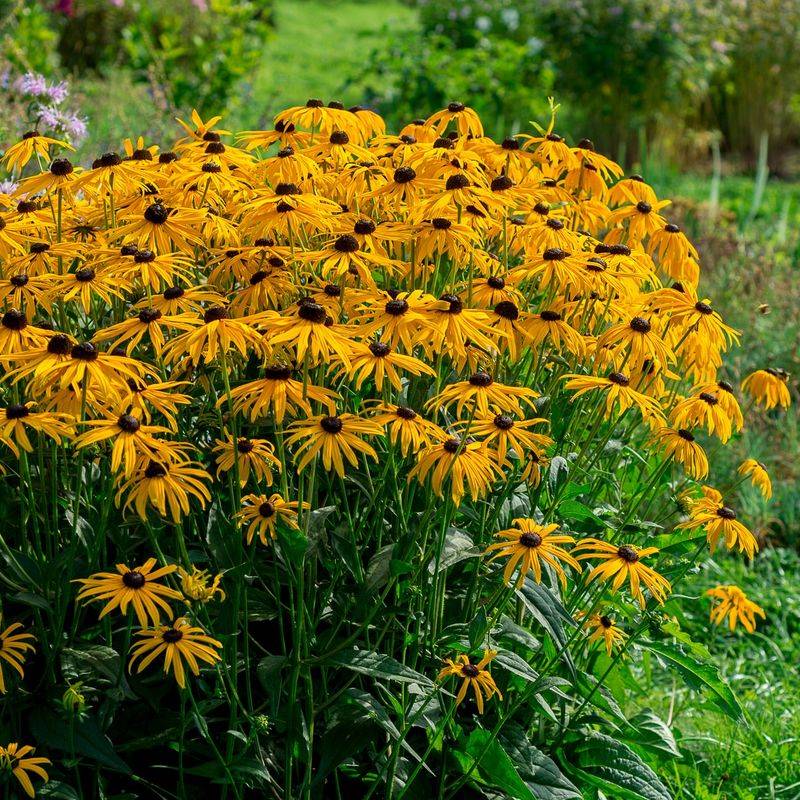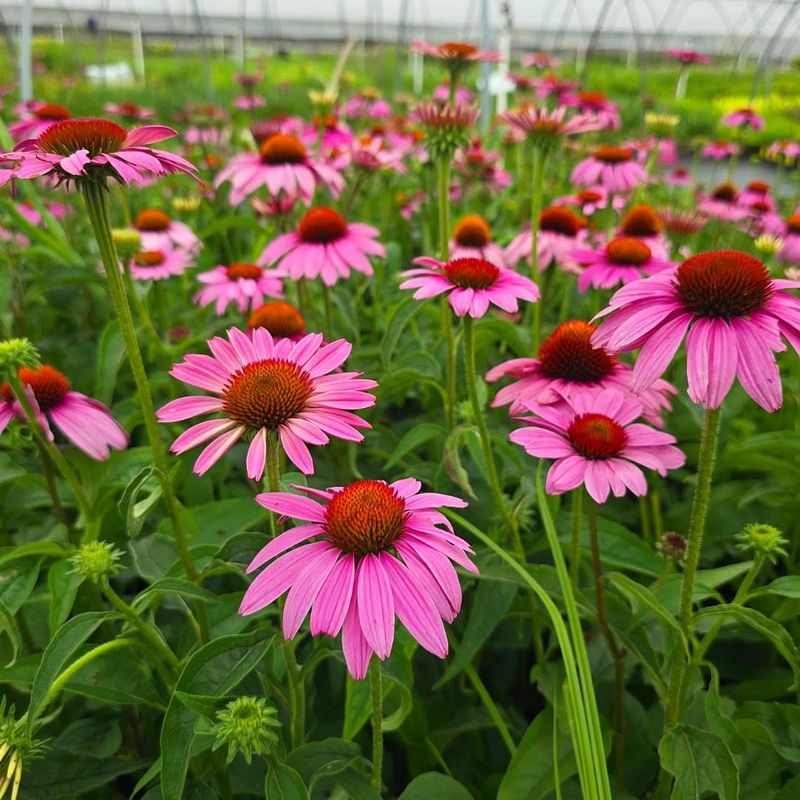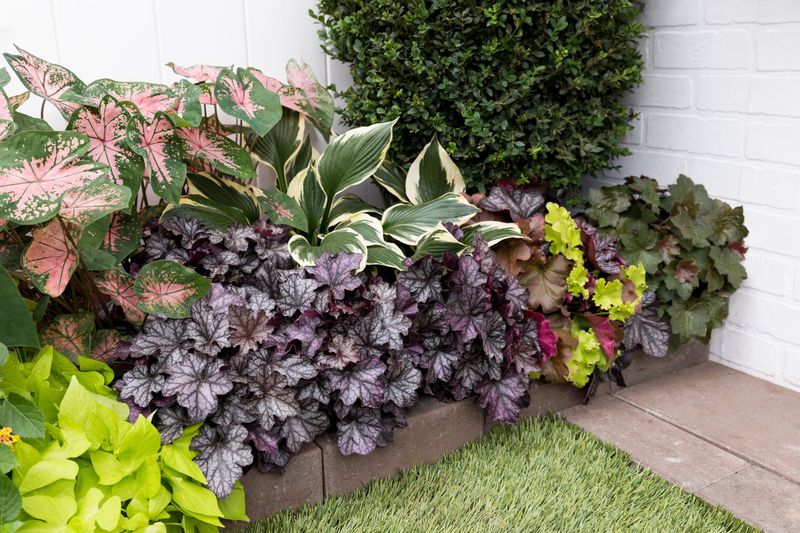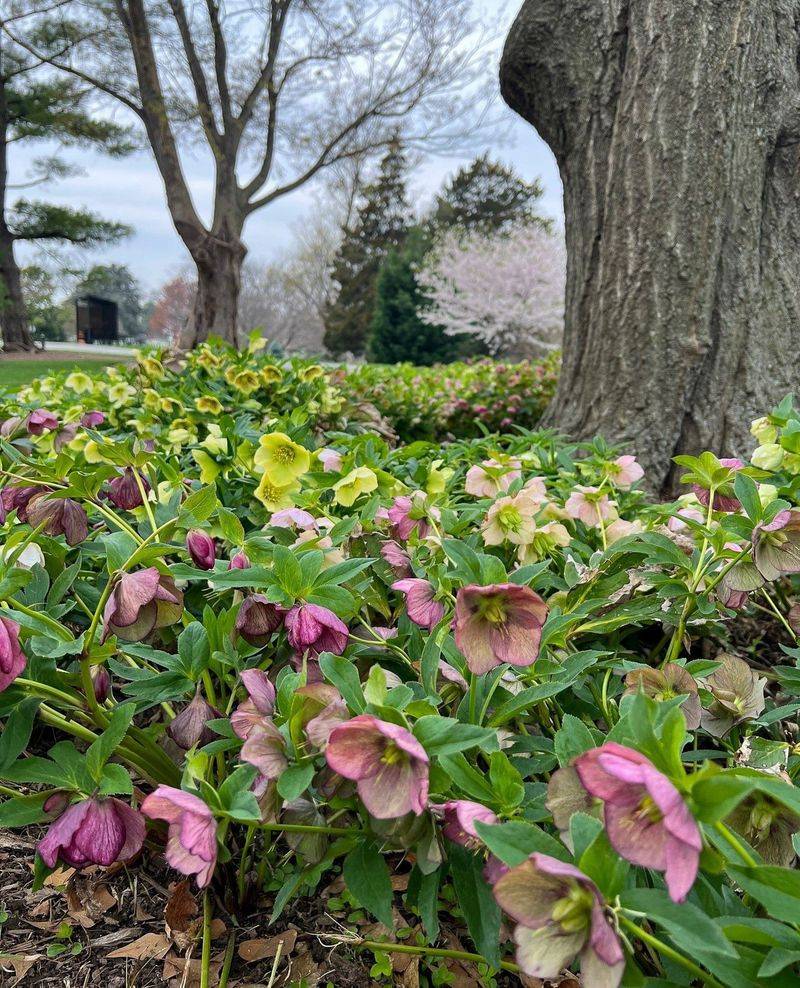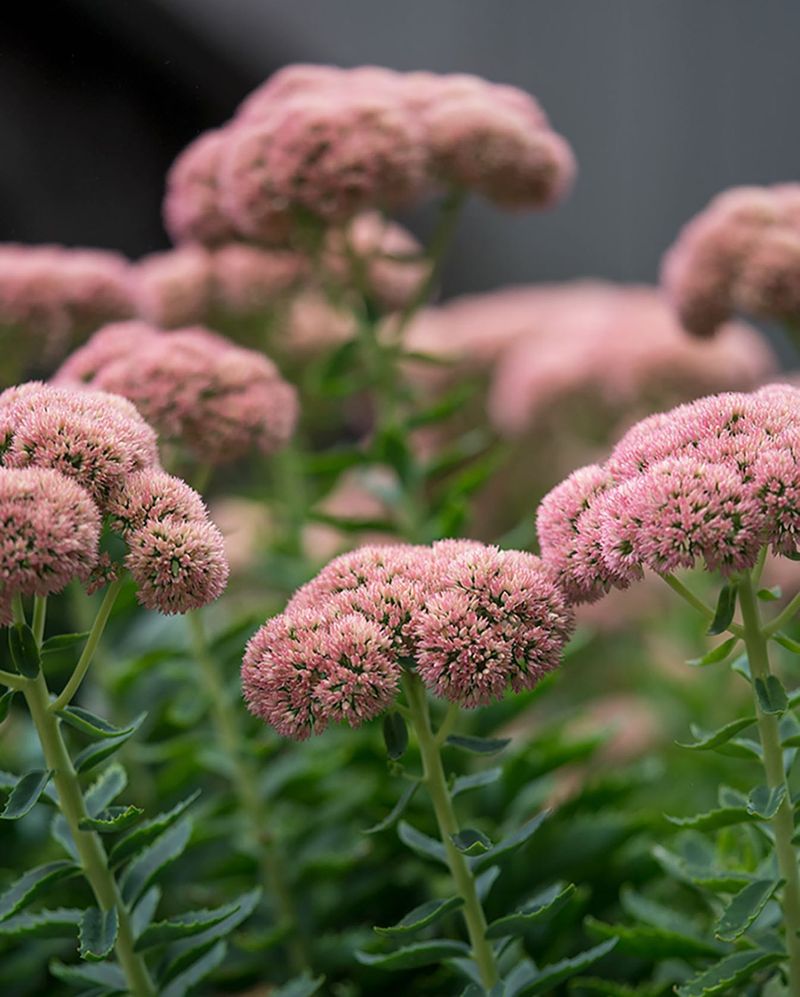Great gardens don’t happen by accident—they’re planned a season ahead. July might be peak bloom time, but it’s also the perfect moment to think about next year’s showstoppers. Now’s your window to divide thriving perennials or order new favorites while they’re still available.
These 18 reliable, beautiful perennials will reward you with stronger roots, fuller blooms, and a garden that practically glows come spring and summer.
1. Bearded Iris
Bearded irises create a dramatic spring show with their sword-like foliage and elegant blooms. July is the ideal month to dig and divide these beauties when they’re semi-dormant.
Carefully lift the rhizomes, trim the foliage to about 6 inches, and separate the healthy outer sections from the older center parts. Replant these divisions with the rhizome partially exposed to the sun.
Each division will establish before winter and reward you with fresh blooms next season.
2. Oriental Poppies
Summer slumber makes July perfect for dividing these show-stopping bloomers. Oriental poppies naturally go dormant after their spectacular May-June flowering period, often disappearing entirely above ground.
Take advantage of this rest period by carefully digging and dividing their taproots. The segments should be replanted immediately in well-draining soil with the crown about 1 inch below the surface.
Fresh divisions establish quickly during late summer, creating robust plants that will produce dramatic blooms next season.
3. Daylilies
Tough-as-nails daylilies respond beautifully to summer division. After their initial bloom cycle wraps up in early July, these hardy perennials can be dug up and separated into smaller clumps.
Look for natural divisions in the crown, and use a sharp spade to create sections containing at least 3-5 fans of leaves. Trim the foliage back by half before replanting to reduce transplant stress.
Water newly divided plants consistently through summer’s heat, and they’ll reward your efforts with increased blooming next year.
4. Bleeding Heart
Bleeding hearts enter dormancy by midsummer, making July the sweet spot for division. Their fernlike foliage often yellows and dies back naturally during hot weather, signaling it’s time to dig in.
Carefully lift the entire root ball and divide it into sections using a sharp knife. Each division should have several eyes (growth buds) and a healthy portion of roots.
Replant immediately in humus-rich, moist soil with eyes just below the surface, and water thoroughly to help them establish before fall.
5. Hostas
Morning shade lovers with attitude, hostas grow more impressive each year. July offers a perfect opportunity to divide these leafy champions while they’re actively growing but before late summer heat stress kicks in.
Lift the entire clump and use a sharp spade or knife to cut through the dense root mass. Even small divisions with just a few leaves will establish quickly if kept consistently moist.
Their rapid recovery means you’ll enjoy full-sized plants by next summer, making them among the most rewarding perennials to divide.
6. Siberian Iris
Unlike their bearded cousins, Siberian irises form fibrous root clumps that benefit from division every 3-4 years. Their grassy foliage and elegant blooms make them garden standouts, but overgrown clumps flower less profusely.
July division allows time for reestablishment before winter. Dig the entire clump, wash away soil to see natural divisions, and separate into sections with a sharp knife.
Trim foliage to about 6 inches before replanting to reduce water loss while new roots develop in their fresh locations.
7. Peonies
Garden royalty deserves special timing. While fall is traditional for peony division, ordering bare-root peonies in July ensures you’ll get first pick of the best varieties before they sell out.
Most nurseries ship peony roots in September or October, perfect for establishment before winter. When planting, position the eyes (pink growth buds) no deeper than 2 inches below soil level in full sun locations.
Patience pays off—newly planted peonies typically take 2-3 years to reach full flowering potential, but will reward you with decades of spectacular blooms.
8. Astilbe
Feathery plumes dancing above ferny foliage make astilbes shade garden superstars. Their clumping habit means they benefit from division every 3-4 years to maintain vigor and flowering.
July division works beautifully as long as you provide ample water afterward. Lift the entire clump, then separate it into smaller sections with several growing points each.
Replant immediately in rich, moist soil and water thoroughly. These moisture-lovers will establish quickly with consistent irrigation through the remaining summer heat.
9. Garden Phlox
Fragrant summer blooms make tall garden phlox a cottage garden essential. July gives you two options: divide existing plants or order new mildew-resistant varieties for fall planting.
For division, cut stems back by half, then dig and separate the clump into sections with 3-5 stems each. Discard the older center portions and replant the vigorous outer sections.
Regular division every 3 years rejuvenates phlox, improving air circulation that helps prevent the powdery mildew issues that can plague older clumps.
10. Coreopsis
Sunshine in plant form, coreopsis delivers weeks of cheerful yellow or pink daisy-like blooms. These short-lived perennials benefit from division every 2-3 years to maintain vigor and prevent center die-out.
July division works well, especially if you cut back flowering stems first. Dig the entire clump, then pull or cut it into smaller sections, each with roots and several growing points.
Replanted divisions establish quickly and often bloom again by season’s end, while continuing their display with renewed energy next summer.
11. Shasta Daisies
Classic white daisies with sunny centers create timeless garden charm. After their initial summer flowering, Shasta daisies benefit from division to prevent center die-out and maintain vigor.
Lift the entire clump and separate it into smaller sections using your hands or a garden fork. Each division should have several growing points and a good root system.
Replant immediately, water thoroughly, and you’ll likely enjoy a second flush of blooms in fall, followed by a stronger display next summer.
12. Baptisia
False indigo develops massive, shrub-like proportions with age, creating a dramatic garden presence. Unlike many perennials, baptisia resents division due to its deep taproot.
July is perfect for ordering these natives for fall planting when nurseries offer the best selection. Young plants establish better than attempting to divide mature specimens.
Once established, baptisia requires minimal care while providing decades of spring blooms and attractive seed pods. Its drought tolerance makes it perfect for low-maintenance garden areas.
13. Ornamental Grasses
Movement and texture make ornamental grasses garden essentials. Most benefit from division every 3-4 years when centers begin dying out, leaving a donut-shaped clump.
July division works well for warm-season varieties like miscanthus and panicum. Cut back foliage by half, dig the entire clump, and use a sharp spade or saw to create smaller sections from the outer, more vigorous portions.
Replant immediately at the same depth and water consistently until established. Divided grasses often regain their impressive size by next season.
14. Rudbeckia
Black-eyed Susans bring golden cheer to late summer gardens. These prairie natives form expanding clumps that benefit from division every 3-4 years to maintain vigor and prevent spreading where unwanted.
July division works perfectly, even while plants are flowering. Simply dig the entire clump, separate it into smaller sections with several stems each, and replant immediately.
Water thoroughly after replanting, and these tough natives will establish quickly, often continuing to bloom without missing a beat.
15. Echinacea
Purple coneflowers combine medicinal properties with pollinator appeal. These prairie natives develop expanding clumps that benefit from division every 3-4 years, though they’re somewhat more challenging to divide than some perennials.
July division works if you’re careful with their taproots. Dig deeply around the clump, lift carefully, and separate sections ensuring each has adequate roots and several growth points.
Replant immediately and water thoroughly. Divided plants may take a full season to regain their full flowering potential but will return stronger than ever.
16. Heuchera
Colorful foliage makes coral bells year-round garden stars. These woodland natives gradually develop woody crowns that rise above soil level, making July division beneficial for rejuvenation.
Lift the entire plant and cut through the crown with a sharp knife, ensuring each division has both roots and several leaves. Replant with the crown at soil level, slightly deeper than they were growing before.
Consistent moisture during establishment helps divisions develop new roots quickly, creating fresh, vigorous plants for next season’s display.
17. Hellebores
Winter-blooming hellebores bring early-season joy to shady gardens. Unlike many perennials, mature hellebores rarely need division, but July offers the perfect opportunity to order these woodland gems for fall planting.
Most nurseries ship hellebore plants in early autumn, ideal for establishment before winter. Plant in humus-rich soil in dappled shade, with the crown at soil level.
Young plants typically bloom in their second year, gradually forming impressive clumps that flower reliably from late winter through early spring.
18. Sedum
Drought-tolerant sedums thrive in challenging conditions where other perennials struggle. Their fleshy leaves and late-season blooms attract butterflies while requiring minimal care.
July division helps prevent tall varieties from becoming floppy. Simply cut stems back by half, dig the clump, and pull apart into smaller sections—they separate easily without tools.
These succulent perennials root readily, establishing quickly even in summer heat as long as soil drains well. Divisions often flower in their first season, continuing the late summer show.

